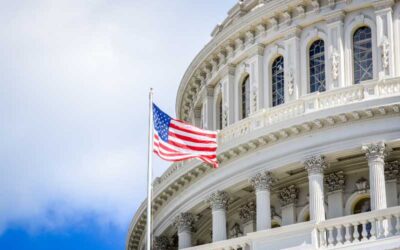The new relief bill provides support for businesses during the ongoing pandemic. Learn more about what this could mean for you regarding PPP loans and the Employee Retention Credit.
PPP APPLICATION FORMS RELEASED
Applications are now available for PPP Second Draw Loans, and the program has opened back up for first-time borrowers, as well.
PPP SECOND DRAW
Applications are available here, and community banks can begin processing the applications on Monday, January 11 (other banks can begin processing on January 14). To apply for a second draw loan, a business must meet the following criteria:
- Used the funds from their first PPP loan (first-time borrowers, see below).
- Experienced a 25% or more decline in gross receipts in any calendar quarter of 2020 compared to the same quarter in 2019.
- Have 300 or fewer employees.
- Meet the necessity requirement from the original loan (“The uncertainty of current economic conditions makes necessary the loan request to support the ongoing operations.”)
A business requesting a loan of $150,000 or more will need to provide documentation to show the decline in gross receipts. Consider using state sales tax filings or provider tax filings (MN Care tax) to illustrate gross receipts’ decline. Businesses may also use quarterly financial statements or annual tax returns.
FIRST TIME PPP BORROWERS
Applications are available here, and community banks can begin processing the applications on Monday, January 11 (other banks can begin processing on January 14).
The program is now open to entities that were ineligible during the previous two rounds of PPP funding, including 501(c)(6) organizations. The program is also available to businesses that did not initially apply in the earlier rounds of PPP provided that they meet the criteria for the loan.
EMPLOYEE RETENTION CREDIT
If a business qualifies for PPP, the first priority should be applying for the PPP funds because those funds may run out. Additionally, there is now an opportunity for businesses that have used the PPP funds to retroactively apply for the employee retention credit for certain wages paid in 2020 and to consider using the employee retention credit for certain wages in 2021.
2020 EMPLOYEE RETENTION CREDIT
Employers are eligible to receive a credit of 50% of wages paid during a government-mandated shutdown or in any quarter in which the entity experienced a 50% or greater decline in gross receipts over the same quarter in 2019. Employers with greater than 100 full-time equivalents are eligible only to the extent that they paid employees not to work. Entities with 100 or fewer full-time equivalents are not subject to this requirement. The credit is capped at $10,000 in wages (or a $5,000 credit) per employee for 2020.
Many businesses were subject to a Minnesota shutdown order at some time during 2020 and should consider retroactively applying for the credit. Wages used for this credit cannot be the same wages used for the PPP. Still, because the PPP period covered 24 weeks, many entities will not need the entire 24 week period of wages to receive full PPP forgiveness. They should consider not using the wages that were paid during a government-mandated full or partial shutdown.
This credit is applied for on the employer’s payroll tax return. However, the process to apply retroactively for wages paid in the 1st, 2nd, or 3rd quarter of 2020 has not been clarified (as of today, January 11, 2021). It is expected that employers may be able to apply through their 4th quarter payroll tax filing. If you possibly qualify for this credit, consider waiting to submit your 4th quarter payroll tax filing until the IRS issues further guidance or until the due date of February 1, 2021.
2021 EMPLOYEE RETENTION CREDIT
Employers are eligible to receive a credit of 70% of wages paid during a government-mandated shutdown or in any quarter in which the entity experienced a 20% or greater decline in gross receipts over the same quarter in 2019. Employers with greater than 500 full-time equivalents are eligible only to the extent that they paid employees not to work. Entities with 500 or fewer full-time equivalents are not subject to this requirement. The credit is capped at $10,000 in wages (or a $7,000 credit) per employee per quarter for 2021.
Many businesses that qualify for PPP second draw will also be eligible for the 2021 employee retention credit. The same wages cannot be used for both the credit and for PPP forgiveness. Proper planning and analysis will help maximize the coordination of PPP and the employee retention credit. Please reach out to your Smith Schafer advisor to help with this analysis.
QUESTIONS?
As with most topics related to COVID-19, changes are being made rapidly. To learn more, visit the COVID-19 Resource section of our website, contact your Smith Schafer professional or email us at [email protected].



